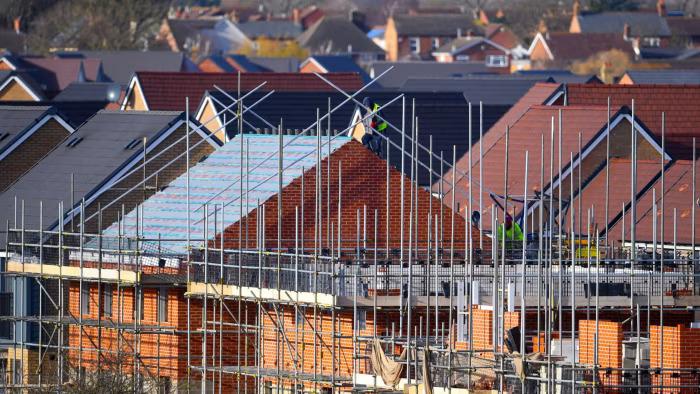Housing associations in England have cut their planned spending on new affordable homes in 2024 in the face of budget presures, threatening to worsen the UK’s acute shortage of social housing. Investment planned for 2024 fell by 9 per cent, or £1.5bn, according to plans drawn up last year, while funding over the coming decade was cut by £20bn, or 15 per cent, according to research by Centrus, a financial adviser that works with housing associations.
The number of homes English housing associations expect to build over the next five years has also dropped by 64,000 since last year, according to official figures. About 1.2mn households in England are on a waiting list for social homes. In the decade to 2022 there was a net loss of 165,000 social homes, as sales and demolitions outpaced new supply. A record 279,400 people are now stuck in temporary accommodation, according to housing charity Shelter. Housing associations completed 40,000 homes across the UK in the year to March, while local authorities built 4,000, according to the latest data from the Office for National Statistics.
Alistair Smyth, policy director at the National Housing Federation (NHF), which represents housing associations, said the decline in planned building was “obviously concerning . . . at a time when we should be building as many social and affordable homes as possible”.
READ ALSO: Federal Ministry of Work and Housing Opens Applications for National Housing Program Sales Review
“Housing associations are still doing as much as they can . . . but we are going through a challenging period,” he added. The decline in planned investment reflects mounting pressure on housing association budgets from inflation and higher interest rates at a time when they need to spend more on upgrading existing homes.
Housing associations have been under intense pressure to tackle mould and damp issues after the death of toddler Awaab Ishak in 2020 was attributed to prolonged exposure to mould that the local housing association had failed to address. Repair and maintenance spending rose to £7.7bn in the year to March 2023, according to the latest government figures, a 20 per cent increase on record spending the year before, on top of £6bn spent on building safety. Clare Miller, chief executive of Clarion, the UK’s largest housing association, said that while she supported improving building safety and maintenance, and the push for greater energy efficiency.
READ ALSO: Addressing the need for Affordable Housing in Rural areas of Maine
“these are all things that bring with them additional cost, and there is no additional income coming”. The pressure on budgets has forced cuts in new construction, underscoring the challenge of delivering more homes at a time when housing is high on the political agenda. Labour’s deputy leader Angela Rayner has promised the “biggest boost to affordable housing for a generation” if the party wins the next general election.
John Tattersall, managing director at Centrus, cautioned that the cuts to planned funding would store up problems for the future.
“Houses take time to build . . . this will be a slow ship to turn around,” he said.
Housing associations say a 63 per cent cut in government funding for affordable housing in 2010 forced them to rely more on private sector borrowing to fund construction, and has left them short of resources.
Source: Ft.com



